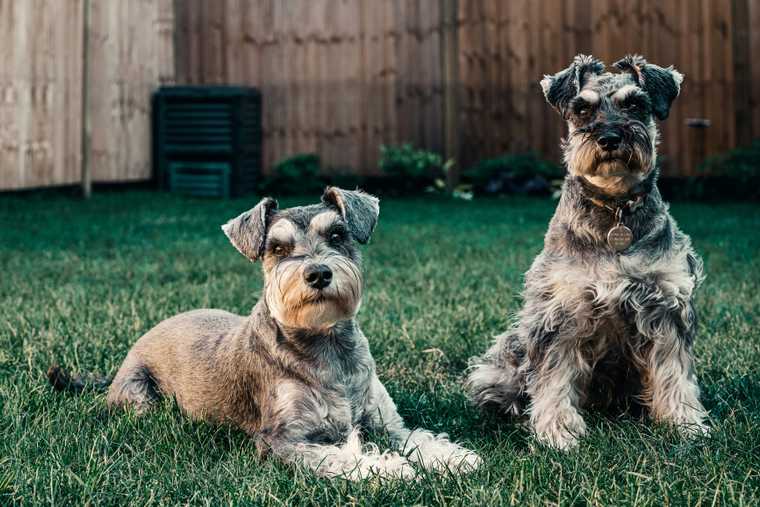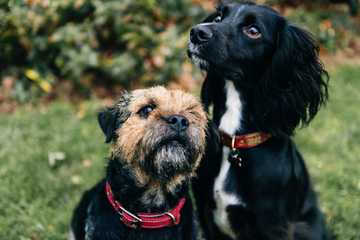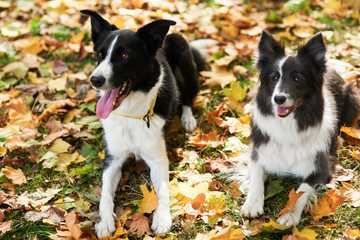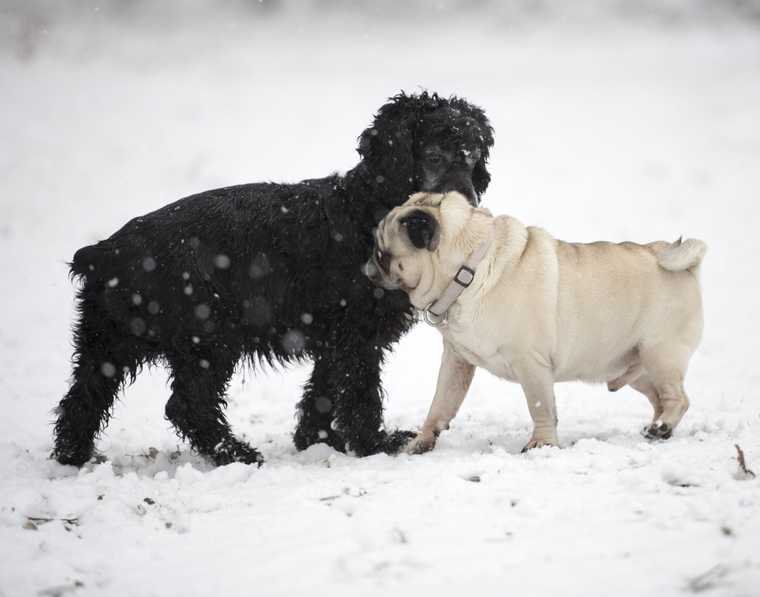How to Introduce Dogs to Each Other?

Just got a new puppy and want to do everything correctly? It's great that you want to ensure everything goes smoothly, as properly introduction is crucial for both the dogs and your happiness and safety, especially if you already have another dog at home. Rushing the first hello can bring trouble, but a plan prepares the ground for puppy love.
After reading our article, you’ll learn the tips and tricks for introducing dogs to each other and bringing them into a balanced state.
Don’t know how to start? We recommend installing the Woofz app to get a 10-day personal program to learn how to socialize your pup, teach your new dog to be friendly to others, train commands, and many more.
How to Introduce Two Dogs to Each Other
Many dog owners wonder how to properly introduce dogs to one another. Introducing pups to each other isn’t as simple as just putting them together and letting them figure things out by themselves. Rushing the process or not managing it properly can lead to fear, anxiety, aggression, and even injury.

1. Make a good first impression
The way dogs interact the first time they meet is critical. Do the first meet as a parallel walk with both dogs on leashes on neutral ground to let your furry friends introduce themselves. They will move closer together. And then, when they can walk side by side without looking interested, you can loosen the leash and continue the guided meetings on a leash in a neutral area.
2. Set the right tone
Dogs feel what you feel with all your energy and body language.

That’s why you need to:
- Stay relaxed and confident. If you’re nervous or stressed, the dogs will sense that.
- Talk to them calmly and cheerfully.
3. Give them space
Don't force interactions. Prevent the dogs from greeting each other and let them go at their own pace. Rather than holding them close together, loosen the leashes so they can move away if they feel discomfort. Forcing them into uncomfortable positions may cause aggressive behavior.
4. Choose the right time
Prepare the introduction at a time when your dogs seem chilled and exercised. The perfect moment is after a walk or active playtime when they’ve had an opportunity to burn off energy and relax. Also, it’s vital to eliminate periods when there are loud noises or a lot of activity in the home that can make the situation more stressful. The less unpredictable or stirred up, the better they will feel.

5. Use positive reinforcement
Through positive reinforcement training, they will learn that being together is great. Keep the interaction light and casual, avoiding direct eye contact and any tension in the leash that could lead to aggression.
6. Supervise closely
Special care is needed to introduce dogs – with time and favorable conditions, most dogs will be friendly and form close relationships. However, some dogs may never be buddies, and that’s fine. The most crucial part is learning to live in harmony with each other.
More Tips for Introducing Dogs
Knowing how to introduce new dogs ensures peace and balance during the smooth first meeting. Here are some recommendations:
- Give the same attention to each dog so there are no jealousy issues.
- Feed the dogs separately.
- Keep a distance from both dogs, and don’t feed them until you introduce them to each other.
- If one dog is overly excited, you should do relaxation activities like aromatherapy, calming sounds, etc.

What Not to Do When Introducing Dogs
Now that we’ve discussed the basic rules of introducing dogs to each other, let’s talk about the potential pitfalls of the process and how to make social interaction between dogs enjoyable.
- Do not leave puppies alone unattended.
- Control them on the leash first, and be ready to separate them fast if there are warning signs of aggression, tension, or stiffness in either dog.
- Watch your dog's body language, barking pattern, raised hackles, or other signs.
- Participate in activities both pets enjoy, such as walks or playtime, to create a bond.
- If you have difficulties, seek advice from a professional.

How to Introduce Dogs When One Is Aggressive
The meeting of dogs, where one of them or both may have aggression issues, must be done carefully to avoid conflicts.
The best way to introduce dogs is by deploying a diplomatic method of managing the safe socialization of dogs.
- First, training a dog for safety and responsible ownership is essential before any other training or introductions to other dogs.
- You should carefully supervise the introduction if one dog is aggressive, as a fight might start.
- Select a neutral outside place to avoid territorial behavior.
- Make sure both dogs are on a secure leash.
- Place a barrier between the two dogs, controlling their approach from the side, not from the front.
- Walk them side by side, and don’t let them sniff each other’s noses or touch.
- Monitor their reactions closely.
- When an aggressive dog starts to show any kind of negativity, you should create a more considerable distance between dogs.
- Reduce the distance between them slowly when they seem neutral or relaxed.
- Observe quiet tension signals such as raised hackles or a low growl and separate them gently if necessary.
- Practice these introductions over a few sessions to assure yourself that these dogs could start off-leash interactions.
Wrap-Up
Put the needed effort into making your pups successful. Be patient, be optimistic, and allow them to talk. With time and patience, your dogs will become best friends. Proper dog introductions result in years of wagging tails, greetings, and doggy snuggles. So breathe deeply, be steady, and take the first step as a team.
Frequently Asked Questions

Passionate team dedicated to help pet owners raise safe and obedient dogs, fostering meaningful connections with their furry companions.

Experienced dog trainer with Bachelor of Science Degree in Animal Behavior. Diplomaed dog nutritionist. CFBA Accredited Canine Behaviorist